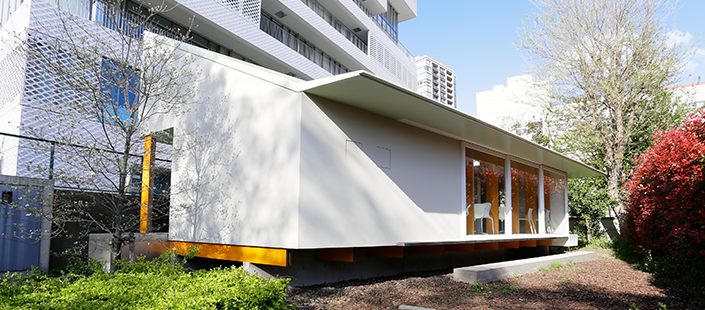- Top
- Human-Environmental Science
ページの本文です。

Human-Environmental Science
What Does the Environment Mean to Humans, and What Do Humans Mean to the Environment?
Two Perspectives that Will Change Our Future Lives
Humans always seek more comfort, safety, and convenience to improve their lives.
However, the influence of humanity on the environment is not always beneficial, and likewise, giving consideration to the environment does not always produce desirable results for every human.
The Department of Human-Environmental Science takes the perspectives of both ordinary people and the environment, and engages in both education and research in the field of “life engineering,” or engineering for the sake of human life through practical manufacturing centered on humans and their lifestyles. There is a need for the creation of science and technology that matches lifestyles, rather than asking people to match their lifestyles to science and technology.
The department fosters people who can solve problems through engineering methods while viewing the various problems of life from the perspectives of ordinary people, with the goal of creating safe, secure, and bountiful society and lifestyles of the future.
Objective: Human-Centered Science and Technology for Our Lives
The department seeks methods for solving problems close to our lives by using a scientific and engineering approach in areas such as clothing, water, architecture, and medical welfare. Amid the need to produce benefits for society through research in scientific and technological fields, the department seeks to serve advanced roles by focusing on the challenges affecting life and the environment. The department thinks the appropriate students for our department are those who want to research about our surroundings as scientific and technological themes, and who possess a keen interest in how science and technology should work in society. During their four years of studies, the students learn how to practically apply science and technology, work on timely themes in fields related to human lives, and study topics such as how to apply and evaluate the results of research in society. Graduates apply the lessons they learn in this department regarding scientific and technological research in fields related to human lives in jobs at private corporations related to lifestyles, continue their studies in graduate school, become civil servants, or find employment in a wide range of other occupations in science-related fields.
Features: Complete Mastery of the Basics, then Specialization
Students complete basic courses before taking applied specialized courses in the curriculum of this department. During their first and second years, students take basic science and technology courses such as mathematics, physics, chemistry, biology, and information science in preparation for later specialization, and obtain a solid foundation in the basics. After this, students take a variety of specialized courses in science and technology pertaining to humans and the environment. However, in order to create new value for society and human life, this is not enough. Students work on concrete problems in seminars while using knowledge regarding science and technology in a Life Innovation by Design & Engineering Education (LIDEE) workshop that teaches the process of creating life innovation with a focus on human activities and human life. Fourth-year students work on their graduation theses based on the results of their previous three years of studies. This allows students to get a feel for how to delve into the challenges they have been grappling with.
Architectural Environment Engineering
Students gain an understanding of the elements of indoor environment, such as lighting, sound, heat, and air, in order to learn how to create a comfortable living environment, while also studying the mechanisms of human perception and methods of perceiving an ambient environment.
Physical Chemistry of Materials for Environment
Students learn the physical properties and structures of the materials used in human life. Lectures cover topics such as the functions and properties of functional materials (i.e., deodorizing and water-absorbing materials), membranes and other materials with molecular selectivity, as well as design and development methods.
Water Environmental Engineering
Students learn evaluation methods and solution technologies for constructing safe and favorable water environments. Lectures cover knowledge related to the meanings and application methods of water quality indices, and techniques for conserving, purifying, and disinfecting water. It is important to develop the technologies with low environmental load.
Human Factors
Lecture topics include engineering technology for healthcare and welfare purposes, such as the engineering-based analysis of mechanisms of the nerves and senses, welfare engineering for people with disabilities, and health support for the elderly.
Practice for Architectural Design I
Students analyze and design houses, public facilities, and urban spaces that conform to our surroundings from the perspectives of design, ergonomics, psychology, etc. In addition to beauty and function, students also emphasize relationships with society and universal design perspectives.
History of European Architecture
When creating a new architectural design, it is important to first understand the legacies of those who have come before us. This course provides an overview of the ideas regarding space, social backgrounds, construction technologies, and other characteristics of major Western architecture from ancient times to the modern era.
Environment Assessment
Students learn modeling techniques for designing and diagnosing societies that are low-carbon, recycling-based, safe, and secure. Lectures cover areas such as material and energy flow analysis, life cycle assessment, and environment risk assessment laws.
Practice in Experiment of Human-Environmental SciencesI
Students learn everything from basics to applications through experiments and practical training in a wide range of topics, including anthropology, physics, chemistry, architecture, and ergonomics.







